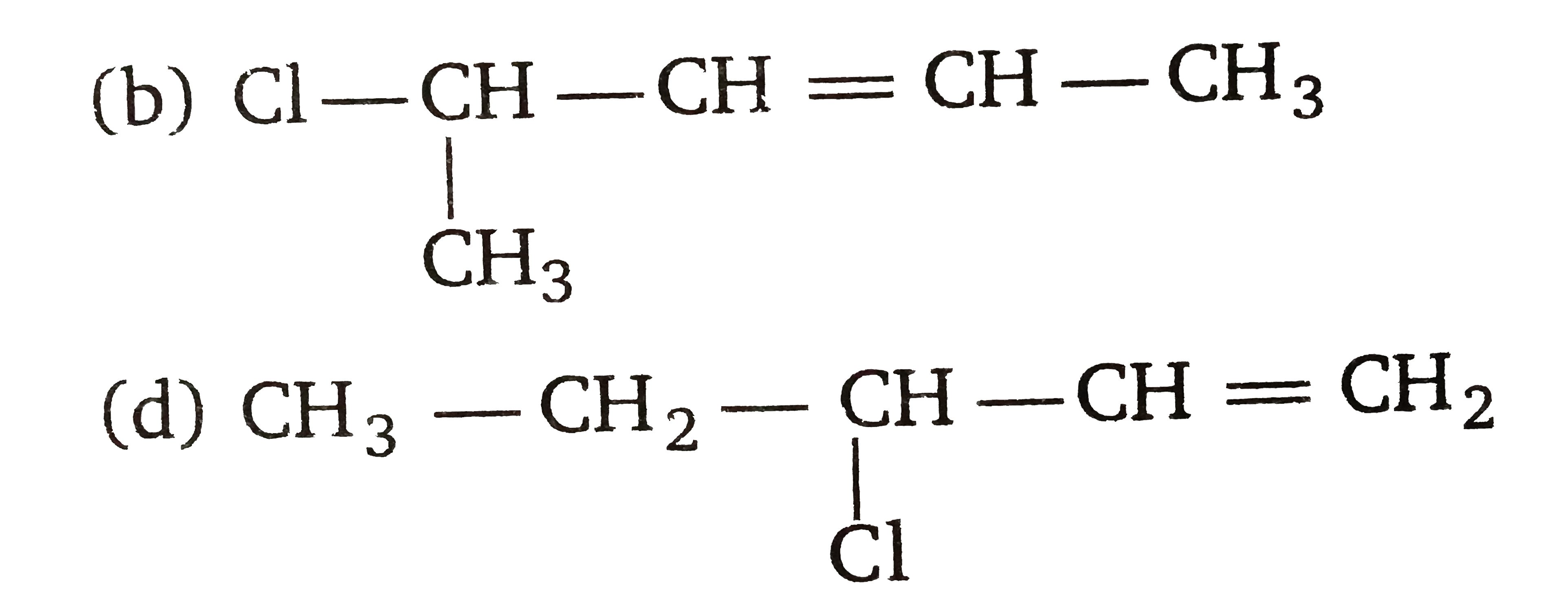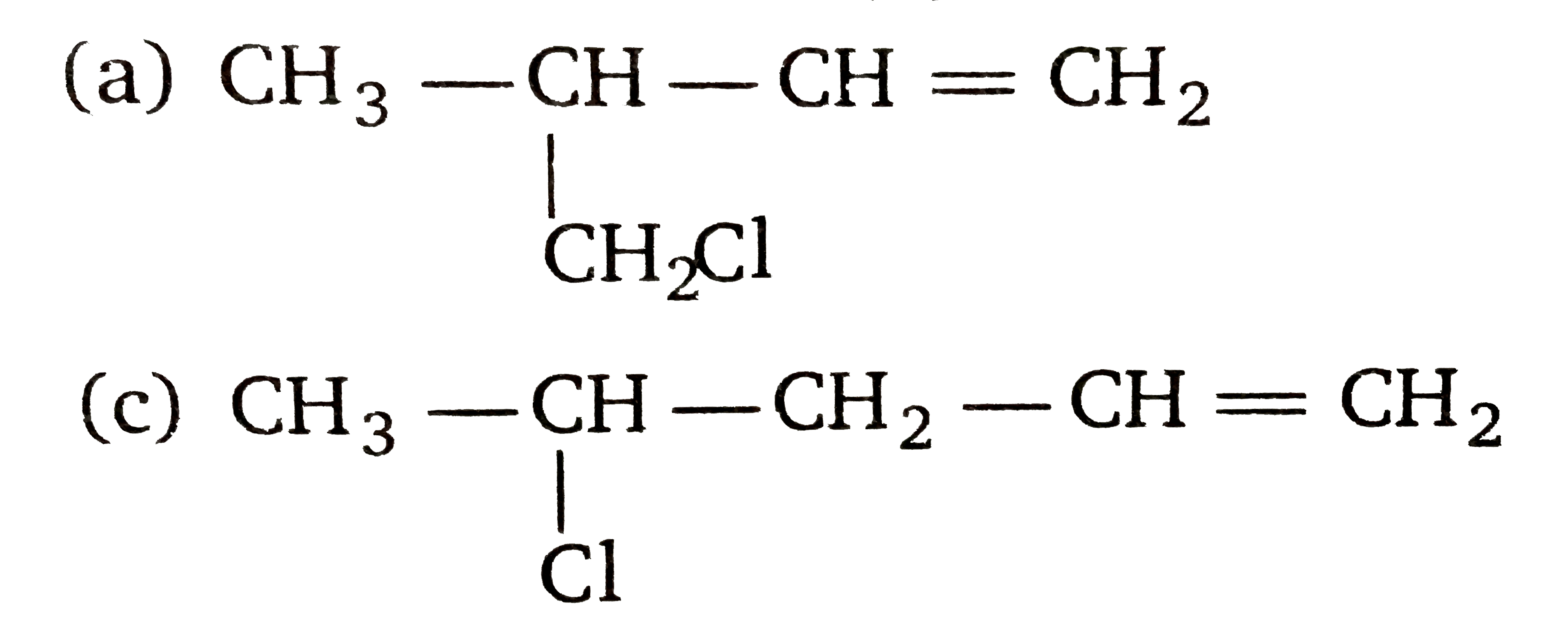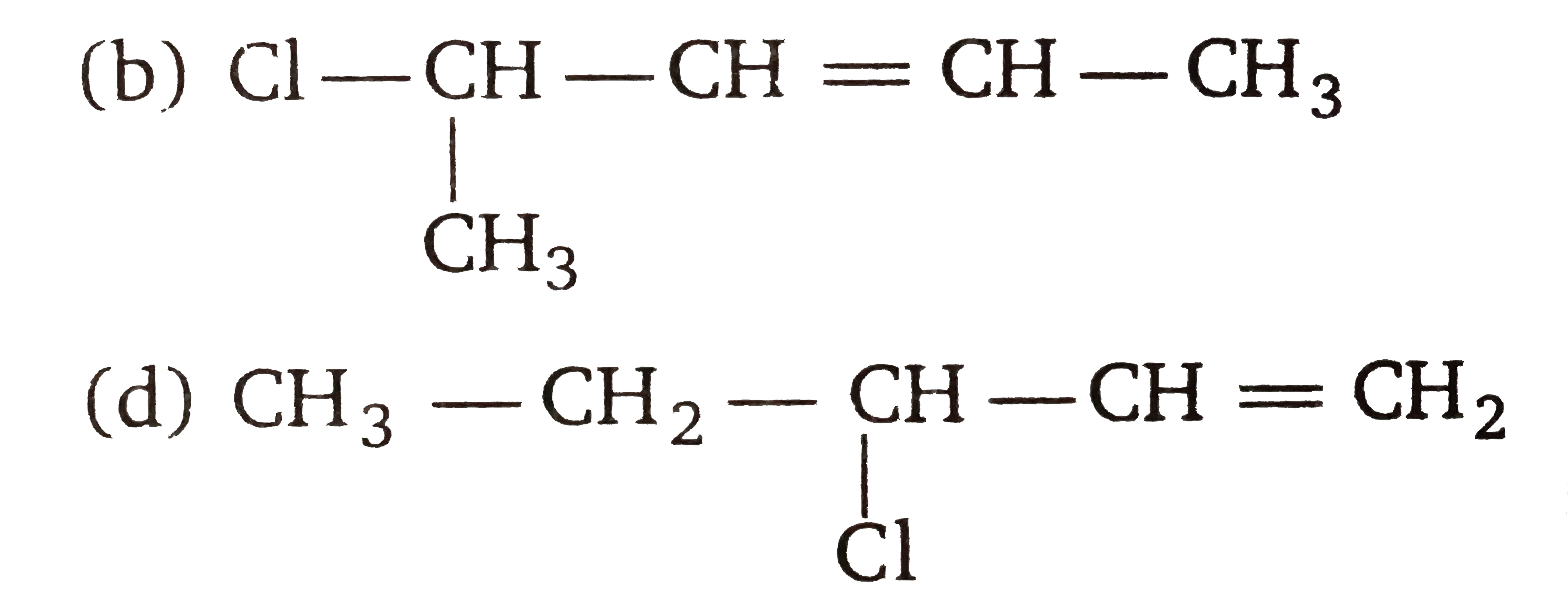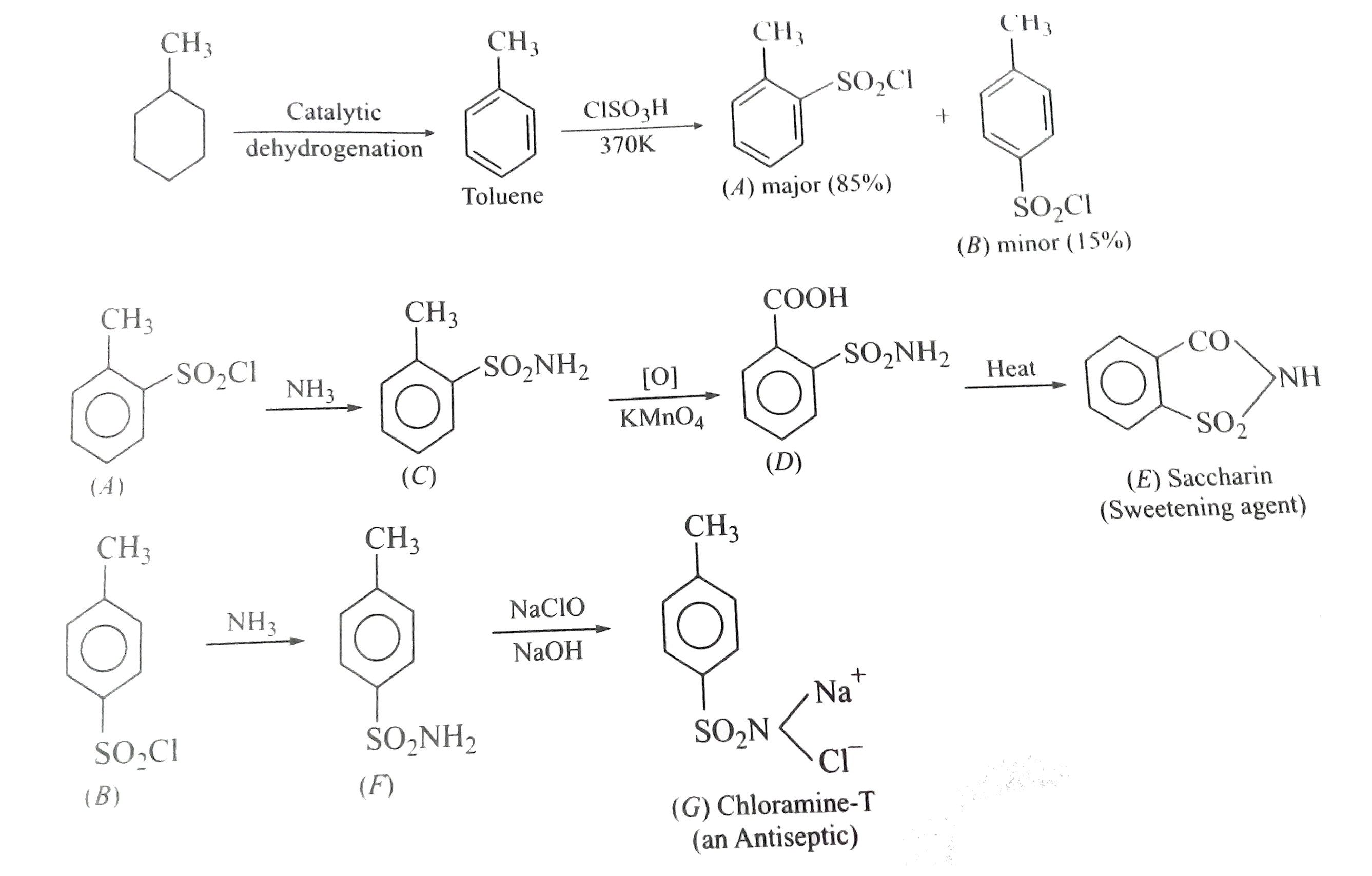Catalytic dehydrogenation of methyl cyclohexane, obtained from petroleum gives a liquid which on treatment with chloro sulphonic acid at 370K yields a mixture to two isomers (A) and (B) , C7H7SO2CI. The major isomer (A) reacts with ammonia to form (C), which on oxidation with permanganate gives compound (D). On heating. compound (D) gives a well known sweetening agnet (E), The minor isomer (B) also with ammonia to give a compound (F) which on treatment with NaCI∅NaOH gives an antiseptic (G). Identify (A) to (G) with proper reasoning .
Topper's Solved these Questions
Similar Questions
Catalytic dehydrogenation of methyl cyclohexane, obtained from petroleum, gives a liquid which on treatment with chlorosulphonic acid at 370 K ylelds a mixture of two isomers (A) and (B), C7H7SO2CI. The major isomer (A) reacts with ammonia to form (C), which on oxidation with permanganate gives compound (D), On heating, compound (D) gives a well known sweetening agent (E). The minor isomer (B) also reacts with ammonia to give a compound (F) which on treatment with NaOCI/NaOH gives an antiseptic (G). Compound (F) on reaction with NaOCI/Cl2 (excess) and fotlowed by oxidation gives a compound (H) used for sterilising drinking water Identify (A) lo (H).
View SolutionCataylitc dehydrogention of methylcyclohexxane, obtained form petroleum, gives a liquid which on treatement with chlorosulphonic acid at 370K yileds a mixture of two isomers (A) and (B),C7H7SO2CL. The major isomer (A) reacts with ammonia to from (C), which on oxidation with permangnate gives compound (D) gives a well-known sweet-ening agent. (E). The major isomer (B) also reacts wtih ammonia to give a compound (F) which on treatment with NaCl∅NaOH gives an antiseptic (G). Idntify (A) to (G).
View Solution
Knowledge Check
Optically active isomer (A) of (C5H9Cl)on treatment with one mole of H2 gives an optically inactive compound (B) compound (A) will be :
ACH3−CH∣CH2Cl−CH=CH2BCl−CH∣CH3=CH−CH3CCH3−CH∣Cl−CH2−CH=CH2DCH3−CH2−CH∣Cl−CH=CH2Optically active isomer (A) of (C5H9Cl) on treatment with one mole of H2 gives an optically inactive compound (B) compound (A) will be :
A B
B C
C D
D
An equimolar mixture of alkylbromide (A) and ammonia gives (B) which on treatment with NaNO2 and HCI gives (C) . Compound (C) on oxidation followed by decarboxylation gives . What (A) ?
ACH3CH2CH2BrBCH3CH2−CH∣Br−CH3CCH3CH2BrDCH3−CH∣CH3−CH2Br
Optically active isomer (A) of (C5H9Cl) on treatment with one mole of H2 gives an optically inactive compound (B) compound (A) will be :
View SolutionAn element A reacts with water to form a compound B which is used in white washing. The compound B on heating forms an oxide C which on treatment with water gives back B. Identify A, B and C and give the reactions involved.
View SolutionAn element A reacts with water to form a compound B which is used in white washing. The compound B on heating forms an oxide C which on treatment with water gives back B. Identify A, B and C and give the reactions involved.
View SolutionAn element A reacts with water to form a compound B which is used in white washing. The compound B on heating forms an oxide C which on treatment with water gives back B. Identify A, B and C and give the reactions involved.
View SolutionAn organic compound (A) reacts with ethanol to give (B) and (C). On acid hydrolysis (C ) yields (B) and (D). oxidation of (D) gives (B). (B) is an acid and forms a salt with Ca(OH)2 which on dry distillation gives (E ), C3H6O. Give the structures of (A) to (E ) with proper reasoning.
View Solution

